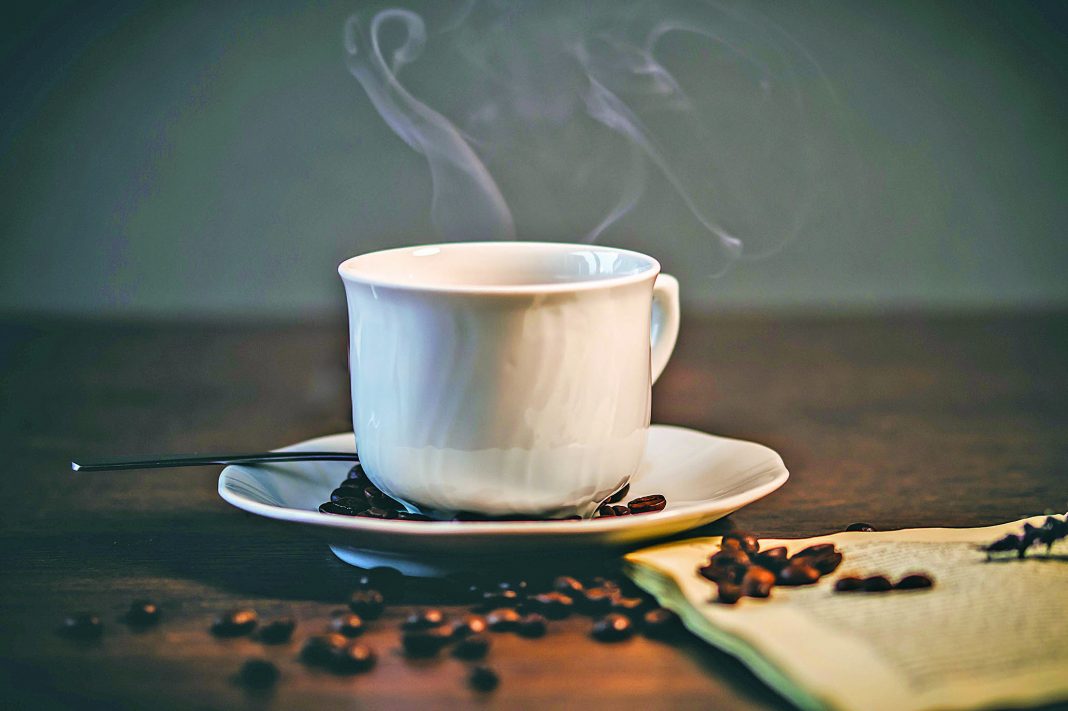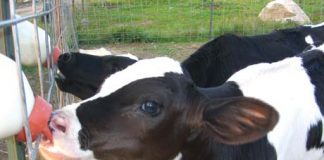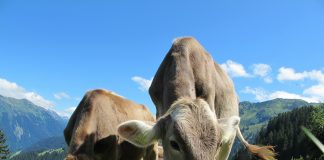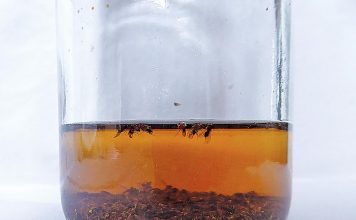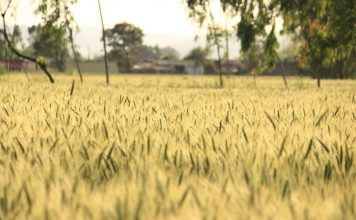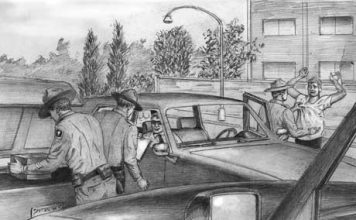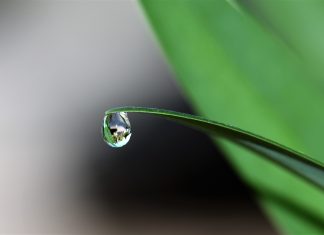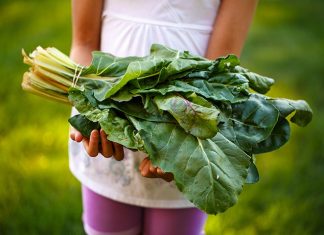By O.E. MacDougal
May/June 2018, Backwoods Home
Every second of every day about 26,000 cups of coffee are drunk around the world. That’s about 2¼ billion cups a day. But it’s still not the most widely drunk beverage. Number one is water. Second is tea and that’s because it is the national drink of the world’s two most populated countries, China and India.
The Discovery of Coffee
No one knows who discovered coffee or when. Legend has it that it was discovered by an Ethiopian goat herder who noticed his goats seemed more energetic after eating the beans of a coffea plant. That may or may not be true, but researchers are pretty sure coffee was discovered in Ethiopia, perhaps as early as the 10th century.
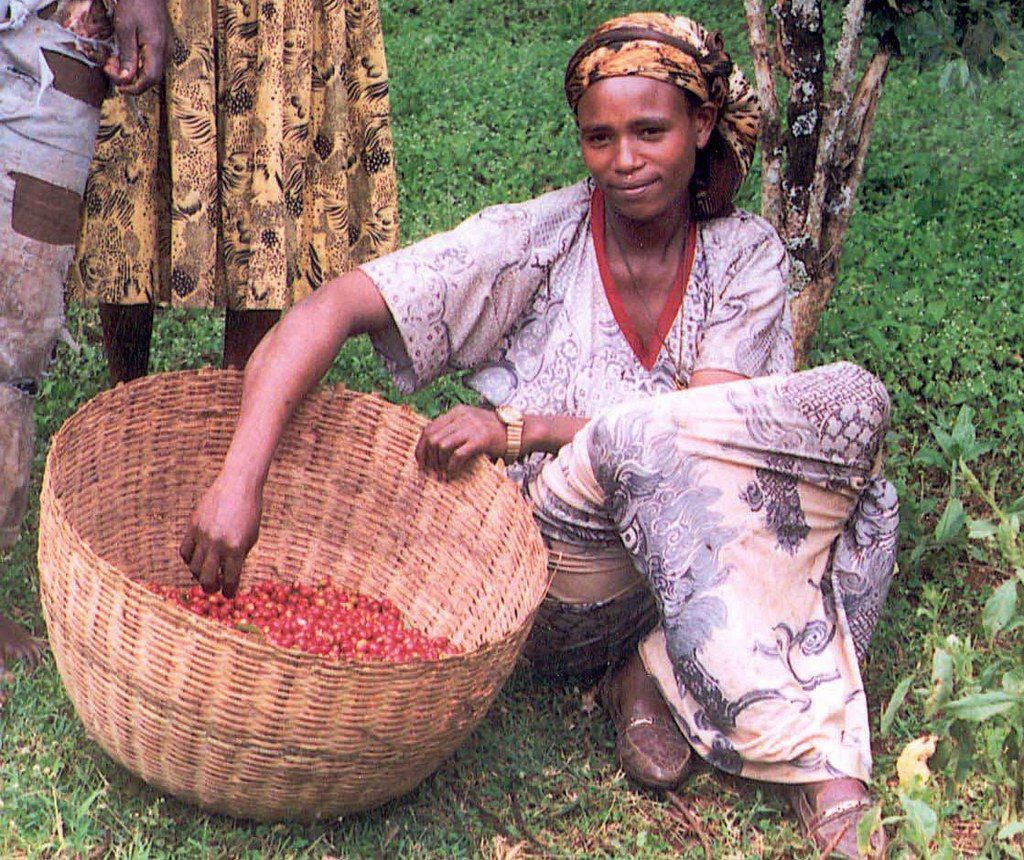
However, it’s not until the middle of the 15th century we see the first credible evidence of coffee plants being cultivated, the beans roasted, and the coffee being drunk because it was recorded in Sufi monasteries in Yemen. And it wasn’t long after that that it spread from Yemen throughout the Arab world and coffee shops sprung up all over the Middle East.
Coffee didn’t arrive in Europe until late in the 16th century where some called it the “Devil’s drink” because it had, after all, come to Christendom from the Arabs. In Venice, which was one of the most prosperous and important cities in Europe at the time, the clergy wanted it banned. But the merchants saw it as a way to make a buck, plus they had probably already drunk it with the Arabs and loved it. But now it was a religious issue, and who better to adjudicate the dispute than the Pope, in this case, Pope Clement VIII. Clement said that before he made a decision, he wanted to taste it. From his first sip he loved it, and after that coffee not only caught on in Europe but by the mid-17th century it was being drunk in New Amsterdam (now New York), and by the early 18th century it was being grown in the Caribbean.
Age of Enlightenment
Just as had happened in the Arab world, coffee houses sprung up all over Europe. Many historians today believe the Age of Enlightenment came about when coffee houses became meeting places for European intellectuals, and the coffeehouses were places where ideas were exchanged. It also helped that these same intellectuals stopped drinking beer for breakfast and started having coffee. That’s not a joke. Historians have also pointed out that, before there were centralized stock exchanges, it was coffee houses where investors met and bought and sold stocks from each other. Capitalism flourished over cups of coffee.
Despite being only the third most widely consumed beverage in the world, today coffee is the second-most internationally traded commodity on earth, surpassed only by petroleum. It is grown in more than 60 countries, including the United States where it is commercially grown only in Hawaii, California, and Puerto Rico. At one point, in the 19th century, Puerto Rico supplied 14 percent of the world’s coffee.
Brazil is the largest coffee producer, producing one third of the world’s coffee, but because of an incredibly successful marketing ploy, Colombia is the world’s best-known coffee-producing country. Remember the fictitious Colombian coffee farmer, Juan Valdez? This ad campaign helped make Colombia the world’s second biggest producer until in 1998 it was surpassed by Vietnam. By the way, Ethiopia, where coffee was first discovered, ranks a healthy #5, and while in almost every other country coffee is grown on farms and plantations, in Ethiopia most of it is still harvested from wild trees.
Arabica and Robusta Coffee
There are more than 100 species of coffee trees growing in the world, but only two are of any notable commercial importance: Arabica, which accounts for 70 percent of all the commercial coffee produced, and Robusta, which accounts for almost all the rest. They are different in the way each is grown and the type of coffee they produce. Arabica beans produce a milder cup with subtler flavors. They are pretty much the world’s favorite.
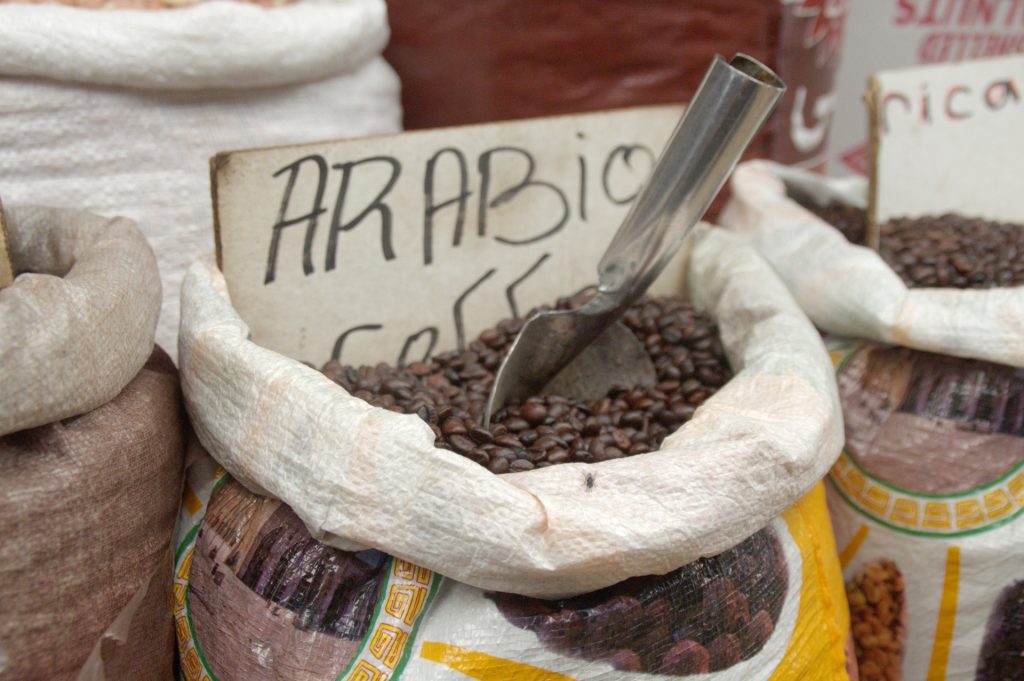
Robusta beans produce a harsher and more bitter cup of coffee. They are easier to grow because the plants have as much as three times the caffeine as Arabica plants, making them more resistant to insects and disease. Robusta beans are often used to make instant coffees and are sometimes blended with Arabica beans, when there’s a shortage of Arabica beans, to extend the supply of said Arabica beans. However, Arabica beans are never used to extend the supply of Robusta beans.
Within the two types there are many varieties. For example, there are “good” Arabica beans and lousy Arabica beans, but to many connoisseurs the worst tasting Arabica beans are better than the best tasting Robusta beans.
The Rarest, Most Expensive Coffees
Among the rarest and most expensive coffees in the world is Kopi Luwak or civet coffee. It’s made from coffee beans that have been eaten and pooped out by an animal called the Asian palm civet, which the locals call a “luwak.” It’s a type of Sumatran civet that looks like a cross between a cat and a weasel. Originally, the raw coffee cherries (that’s what the fruit of a coffea plant is called before it’s husked and roasted) are eaten by luwaks, partially digested, and pooped out. Workers on the farms go out, find the wild-civet poop, separate the coffee beans that have passed through the digestive tract from the feces, clean them, and process them. In some parts of the world, there are people who will pay $1000 for a pound of luwak coffee and as much as $100 for a cup of it brewed.
Today, some luwak coffee is still made this old-fashioned way, i.e., after finding the excrement in the wild, but to cash in on this trendy drink, today luwaks are caged in appalling conditions and force-fed raw beans so they poop this caffeinated gold in captivity. Other animals, including Thai elephants, Brazilian jacu birds, and African bonobos (a type of ape), have been fed raw beans so they can poop them out, too, and people will pay hundreds of dollars for those, too.
Coffee Tasters
As with wine, there are actually coffee tasters who are called cuppers. And just as with wine tasters, cuppers taste the coffee, spit it out, and pass their verdict on the coffee’s quality.
What is Caffeine?
The Merriam-Webster Dictionary says caffeine is “… a bitter alkaloid C8H10N4O2 found especially in coffee, tea, cacao, and kola nuts and used medicinally as a stimulant and diuretic.” Botanists say caffeine appears to act as a natural herbicide and pesticide. Fallen dead leaves from the coffee plant contain caffeine which inhibits many other plants from sprouting and competing with them. Caffeine also kills certain insects that would prey on the plant. However, caffeine is also an attractant to some other insects, birds, and mammals. They like caffeine because they get the same kind of buzz from it that we do, and they’ll come and go from one of those caffeine-bearing plants to another to get more (the same way we keep going back to the coffee pot). In doing so, they act as pollinators.
How Does Coffee Affect Us?
Adenosine is one of the chemicals in our bodies that helps bring on sleep. It attaches itself to certain receptors in the brain and makes us sleepy. Caffeine molecules have a structure similar to adenosine and will attach themselves to those receptors blocking the adenosine, so we don’t feel as tired. Caffeine also increases our adrenaline supply and inflates our blood vessels, making us feel more energetic.
Caffeine also prevents the “feel-good” chemical, dopamine, from getting reabsorbed, thus giving us an enhanced feeling of wellness. Researchers say it’s this feeling of “wellness” that we get addicted to and it makes giving up coffee difficult.
Also, according to researchers at Johns Hopkins University, caffeine enhances memory. It has “… particular effects on strengthening memories and making them resistant to forgetting …” So, if you’re trying to learn something, and you finish the study session with a cup or two of coffee, you’re more apt to remember what you learned.
Health Benefits
Caffeine has been associated with reduction in the chances of developing both Parkinson’s and Alzheimer’s diseases.
But it gets better. Two large studies, one conducted in this country and the other in Europe, have provided compelling evidence that coffee drinkers live longer. The health benefits of coffee seem to accrue to people regardless of gender, race, or nationality. In the American study, drinking just one cup of coffee a day was associated with a 12 percent lower risk of dying from heart disease, cancer, diabetes, stroke, kidney disease, or respiratory disease, while drinking three cups a day reduced these risks by 18 percent. The European study found similar reductions in risk and included reduction in the risk of getting digestive and liver diseases. It apparently doesn’t matter whether you’re drinking the regular coffee or decaffeinated. What’s in coffee that provides the life-extending benefits? They don’t know.
Dangers in Coffee?
I already said caffeine is an herbicide and pesticide. So can the caffeine in coffee kill you? Yes and no. If you ingest about 70mg of caffeine per pound of body weight, or roughly ½ cup of coffee for every pound you weigh, that will do it. So a 170-pound person would have to drink about 85 cups of coffee, about what would fit into one of those five-gallon bottles that sits atop office water coolers —all at once.
Caffeine doesn’t accumulate in your body. It has a “half-life” in your system of about six hours. That is, six hours after you drink a cup of coffee, half of the caffeine in your body is gone. In another six hours, half of the half that was left is gone, leaving one fourth. Six hours after that, half of that fourth is gone, and so on.
Coffee and Cancer?
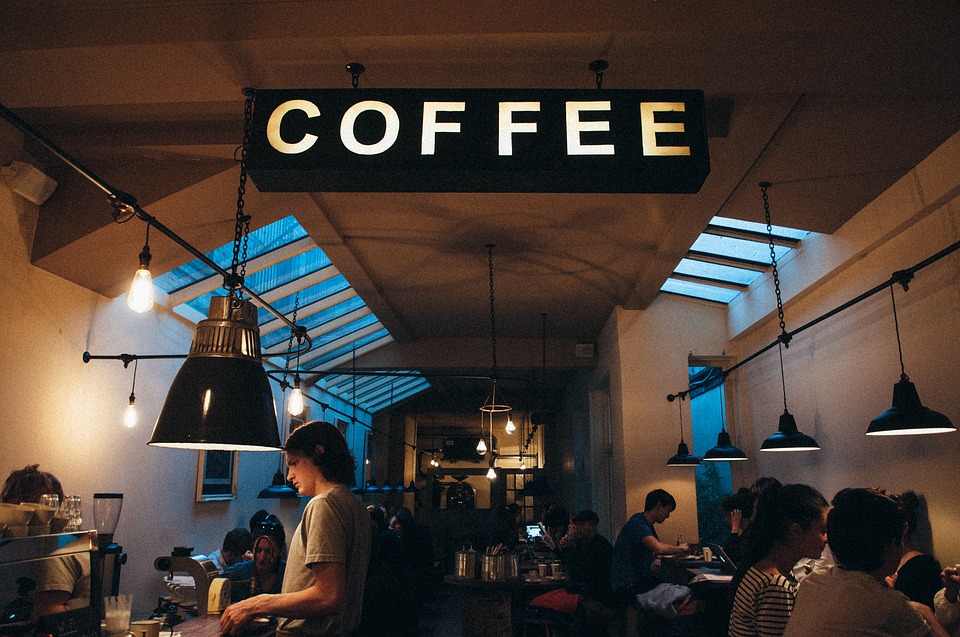 Then there’s coffee and cancer. In 1986, California voters passed Proposition 65, the Safe Drinking Water and Toxic Enforcement Act. It requires all companies in California that have 10 or more employees to provide warnings to their customers if their products contain any of the chemicals that California “knows” to be carcinogenic or that have been associated with birth defects. Anyone can bring suit against any business that they feel is violating the Act, and there’s a $2,500 fine for every person exposed, every time they’ve been exposed. And anyone who sues and wins — whether they’re lawyers or not — gets part of the money.
Then there’s coffee and cancer. In 1986, California voters passed Proposition 65, the Safe Drinking Water and Toxic Enforcement Act. It requires all companies in California that have 10 or more employees to provide warnings to their customers if their products contain any of the chemicals that California “knows” to be carcinogenic or that have been associated with birth defects. Anyone can bring suit against any business that they feel is violating the Act, and there’s a $2,500 fine for every person exposed, every time they’ve been exposed. And anyone who sues and wins — whether they’re lawyers or not — gets part of the money.
Then in 2002, the Swedish National Food Administration associated a chemical called acrylamide with an increased cancer risk. Acrylamides are found in many foods including coffee, hamburgers, French fries, potato chips, in fact, almost everything you’ve ever eaten that’s been cooked at high temperatures. (The coffee beans are roasted at high temperatures.) Also, in 2002, The World Health Organization’s (WHO) International Agency for Research on Cancer classified acrylamide as a carcinogen.
However, the American Cancer Society has said no clear connection has been established between the low dose of acrylamide in foods and cancer, and in 2016 the same WHO reversed their conclusions and said the acrylamide content in coffee (and similar beverages) do not cause cancer. Furthermore, studies have shown again and again that coffee actually improves your health.
So, ignore the stupidity of California and enjoy your cup of coffee. The evidence is overwhelming that it’s good for you, both physically and mentally. D


